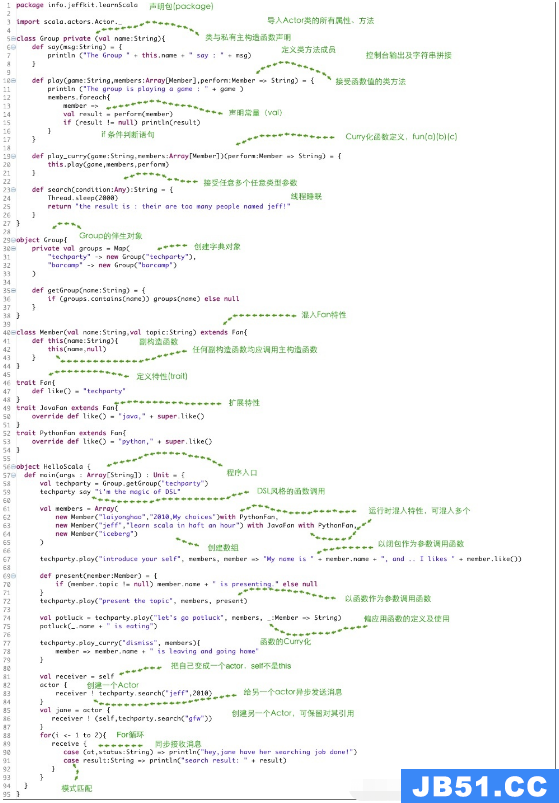Foldable中,我们看到
method foldMap,其描述如下
Map each element of the structure to a [[scalaz.Monoid]],and combine the results.
def foldMap[A,B](fa: F[A])(f: A => B)(implicit F: Monoid[B]): B
你可以像这样使用它:
scala> List(1,2,3) foldMap {identity}
res1: Int = 6
scala> List(true,false,true,true) foldMap {Tags.disjunction}
res2: scalaz.@@[Boolean,scalaz.Tags.disjunction] = true
我的问题是:Clojure相当于Scalaz Foldable的折图?
解决方法
Haskell和Skalaz中的monoid是一个实现三个函数的类:
> mempty返回标识元素
> mappend结合了两个相同类型的值
> mconcat用于将该类型的集合转换为items和v.v.
Clojure没有折叠函数可以调用所有这三个函数; reduce是用于累积集合的高阶函数.
默认情况下,它需要3个参数:reducer函数,累加器和集合. reducer函数用于一次合并累加器和集合中的一个项目.它不需要接受像mappend这样的相同类型.第三个是集合,这就是不需要mconcat的原因.
在Clojure的1.5 clojure.reducers和clojure.core / reduce的上下文中,有一个monoid:一个函数在没有参数的情况下调用时返回它的identity元素.
例如:
(+) => 0 (*) => 1 (str) => "" (vector) => [] (list) => ()
这个’monoid’函数在reduce的两个参数版本中用作reducer;它的’monoidal identity’或mempty被称为创建初始累加器.
(减少[1 2 3])=> (reduce()[1 2 3])=> (减少0 [1 2 3])
因此,如果你想在这里翻译这些例子,你需要找到或创建一个具有这种’monoid’实现的函数,以便在双arity reduce中使用它.
对于脱节,Clojure有或:
(defmacro or "Evaluates exprs one at a time,from left to right. If a form returns a logical true value,or returns that value and doesn't evaluate any of the other expressions,otherwise it returns the value of the last expression. (or) returns nil." {:added "1.0"} ([] nil) ([x] x) ([x & next] `(let [or# ~x] (if or# or# (or ~@next)))))
它确实有’monoid’实现,([] nil).但是,或者实现为支持短路的宏,并且只能在要扩展的表达式中使用,而不能作为函数参数使用:
(reduce or [false true false true true]) CompilerException java.lang.RuntimeException: Can't take value of a macro: #'clojure.core/or,compiling
所以我们需要一个’新’或者这是一个真正的分离函数.它还应该实现一个返回nil的无冗余版本:
(defn newor ([] nil) ([f s] (if f f s)))
所以现在我们有一个带有’monoid’实现的函数,你可以在双arity reduce中使用它:
(reduce newor [true false true true]) => true
看起来有点复杂,直到你理解为什么Clojure实现或作为多个arity宏
(or true false true true) => true


